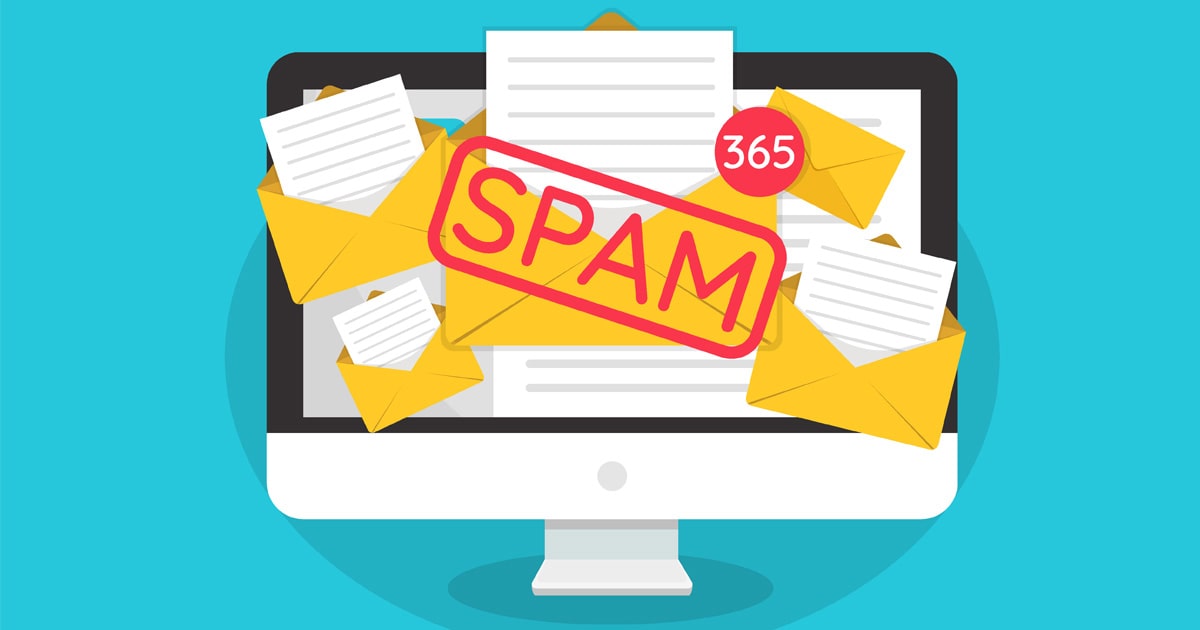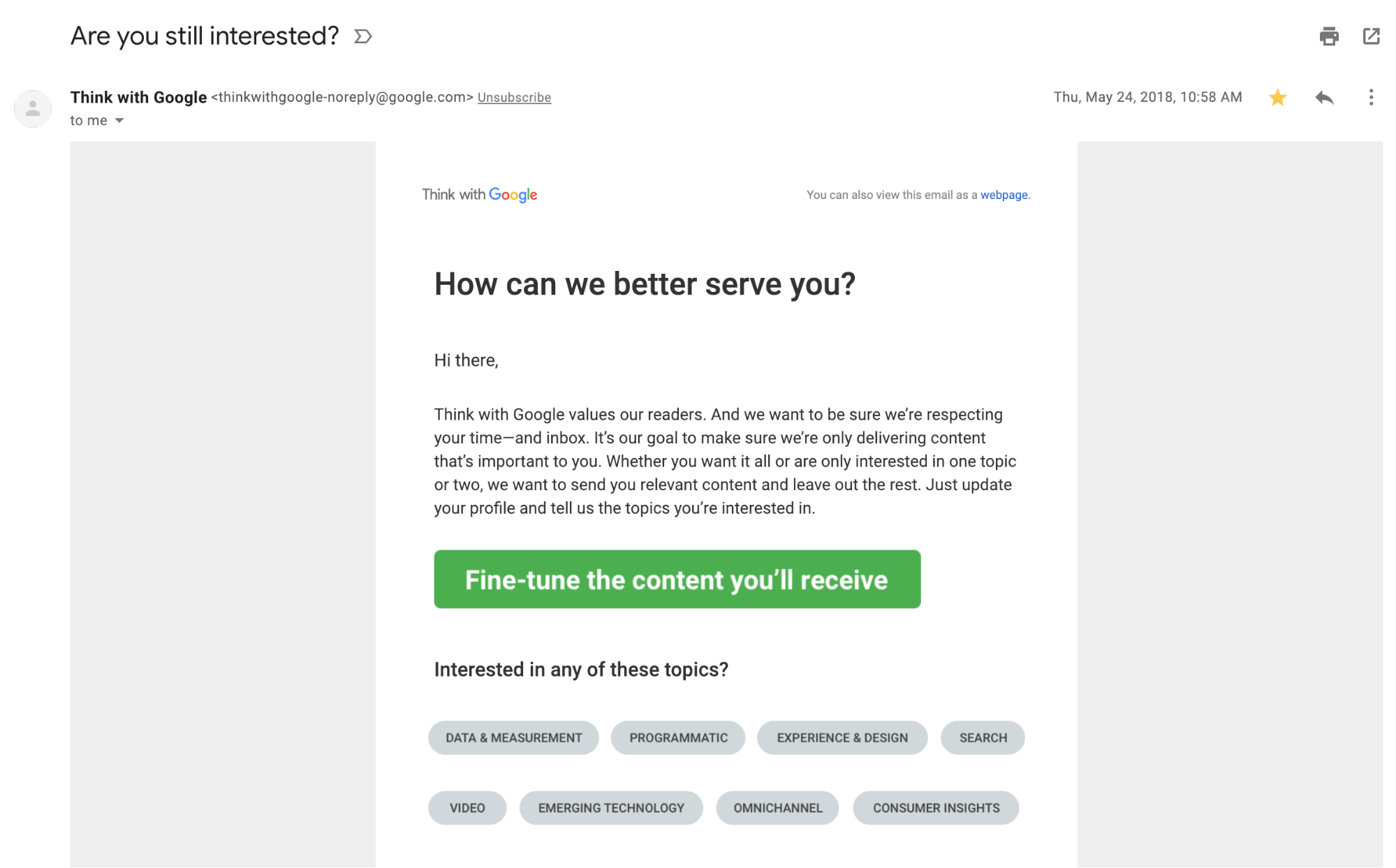Email spam filters are a blessing and a curse. If you’ve ever checked your spam folder — especially one associated with an email address that you haven’t used recently — then you definitely understand why spam filters are necessary. Email scams are plentiful, and it’s fortunate that email providers generally do a good job of keeping email marketing spam from cluttering our inboxes.
However, there’s a fine line between spammy marketing and legitimate promotional emails sent to customers and prospects. Sometimes, the latter gets classified as the former. And the last thing you want is for your own messages to be categorized as email marketing spam.
But don’t give up hope! There’s much you can do to improve your email deliverability. Steer clear of the spam folder with these practical tips.
The Problem of Email Marketing Spam
Long story short: email spam is frowned upon worldwide. There are US’s CAN-SPAM Act, Canada’s Anti-Spam Legislation, and the EU’s E-Privacy Directive, to name a few.
Scams and fraud attempts are obviously verboten, but most email marketing falls within a gray area — your messages could be interpreted as spam if they’re not useful or interesting to the recipient.
This is a huge problem. Data shows that 15 percent of emails don’t even reach the recipient’s inbox. Many messages are sent directly to the spam folder, where they will most likely go unseen and eventually deleted. You do not want your hand-crafted email marketing campaigns to end up in the spam folder, ever.
How do email providers decide what counts as spam? That’s where it gets tricky. There are countless rules of thumb surrounding email spam, and each provider has their own algorithm — but if you’re having deliverability problems, it might be due to one of the common culprits below.
Here are four reasons why your email marketing campaigns may get stuck in users’ spam folders — and what you can do about it.
1) Users Are Marking Your Emails as Spam
This one is the elephant in the room, so let’s get it out of the way first. Every time a
user marks your email as spam, moves your email to their junk or trash folder, or simply deletes
your message, those user actions are recorded by the Internet Service Provider (ISP) and counted against your sender reputation, hurting your deliverability.
One easy way to ensure you don’t hurt your deliverability… No matter what, always keep a close eye on the percentage of your emails that are getting marked as spam. It’s better to deliver targeted messages to smaller list than to blast a promotion to a huge list and risk getting reported for spam.
2) Your Open Rates Are Too Low
Other factors that email spam filters look at are open and click rates. These positive user actions help ISPs measure if their users deem your messages as desirable and engaging.
Much like the first point, you can improve open rates by curating your lists and ensuring that each message is sent to an audience that actually cares. If your messages are targeted, then users are more likely to open them.
Furthermore, remember to prune your email marketing list every now and then. Once again, a small but engaged list is better than a huge database of dormant readers who don’t even remember who you are. Remember that both positive and negative user actions are recorded and accounted for, dictating how accommodating the ISP’s filters and mailbox placement will favor your subsequent sends.
One easy way to ensure users still want to receive your content… Ask readers who haven’t opened in a while to re-confirm their interest, like this example from Think with Google.
3) Your HTML Is Invalid
Many companies use HTML instead of plain text for promotional emails. This is generally a good decision to increase engagement: You can customize the layout and add images to HTML emails for more visual appeal. On average, readers respond better to emails with images compared to emails with just text. Make sure you have a good mix of both HTML and text in your message.
One easy way to ensure your HTML is valid… Check your code with a tool like this one from Validator. Meanwhile, Leanplum is currently testing a feature that will let our customers preview their emails across devices before sending it out.
4) You’re Using Spammy Language
It’s common sense not to use phrases like “How To Make $1,000,000 in 12 Days” in your emails. But, you might be surprised to learn that email marketing spam filters are extremely strict.
There are countless words and phrases that hurt your email deliverability and increase the chances that your message won’t make it to the user’s inbox. These filters range from the obvious, like asking for an “urgent reply,” to the obscure, like expressing excitement about Oprah (yes, really), and even certain numbers (like anything greater than 100 percent).
The good news is, these phrases aren’t single-handedly enough to land your emails in the spam box. However, they still might count against your score, so it’s best to avoid them if possible.
One easy way to ensure you don’t use spammy language… Cross-check your subject lines with a list like this one from Hubspot.
Getting Started With Better Email Marketing
Staying out of the spam box is the first step to better email marketing, but it’s far from the last one. For personalized mobile emails powered by rich user data, consider using a platform like Leanplum.
We have a ton of great email content you can browse, not limited to these gems:
- How to Create Killer Email
- Opening Up About Email Subject Line Testing
- 20 Experts Share Their Email Marketing Secrets
- How to Reduce Email Unsubscribes
- 5 Email Marketing Tools You Absolutely Need
- Joy to These 5 Holiday Email Targeting Tips
- The 13 Most Attention-Grabbing Subject Lines We’ve Ever Seen
- 6 Email A/B Testing Rules You Need to Know
On top of that, we even wrote two guides — one about how to combine email with your other mobile messaging channels, and the other about email marketing in a mobile-first world.
And our world-class customer success team and email deliverability team are here to help in every step of your email marketing journey.
—
Leanplum is a mobile engagement platform that helps forward-looking brands like Grab, Tinder, and Tesco meet the real-time needs of their customers. Schedule your personalized demo here.






